#Sacoglossan sea slug
Text
GIRLY JUST FOUND OUT ABOUT CYERCE ELEGANS

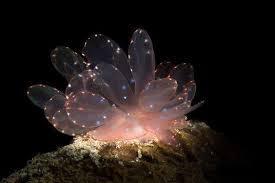
If Cyerce nigricans is a butterfly, then this is a fairy... Cyerce nigricans for comparison:
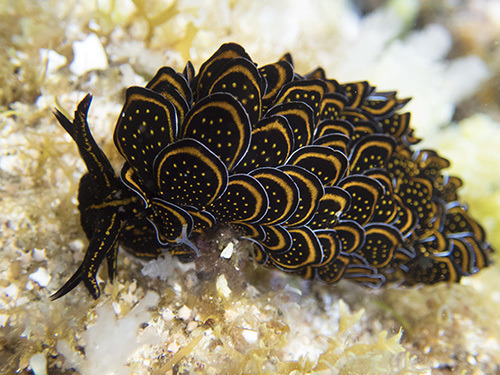
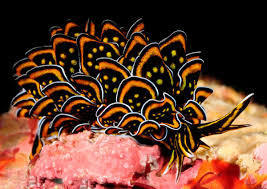
#sea slug#ok i have to go make food#hello my 11k notes. may i offer you: sun fnaf#alright this has 15k notes now. i guess i'll add tags#marine biology#nature#ocean#sea slugs#marine life#animals#sacoglossans#sacoglossan
64K notes
·
View notes
Text
It is now Sea Slug Saturday.
302 notes
·
View notes
Note
do you have a favorite sea slug? If so can we see them
HI !! i would love to share some of my favorite sea slugs with you :D
i'll start off with the Melibe genus because they have some really cool looking guys there.

Melibe colemani
probably my all time favorite sea slug. i like these guys because they look so unique !! it almost looks like a skeleton or a net. this image lets you see the transparent parts of the body easier, especially on that rhinophore (the antennae coming from the head on the right side of the image)

Green Melibe (Melibe viridis)
you miiight recognize this thing from that post about this thing tuesday. the way these guys eat is very similar to that of the Hooded Nudibranch, which is another slug from the Melibe genus. it is so so fascinating to me. they trap their prey inside their hood and then sweep it in from both sides to chow down.
i'm also a huge fan of sacoglossans, which are sea slugs that can photosynthesize using a process called kleptoplasty. i also think a lot of them are just really pretty lol. a very popular sacoglossan is the Leaf Sheep.

Little Leaf Sheep (Costasiella kuroshimae)
the Cyerce genus is another type of sacoglossan that has captured the attention of a lot of tumblr users, most notably Cyerce nigricans and Cyerce elegans.

Black-and-Gold Sapsucking Slug (Cyerce nigricans)

Elegant Sapsucking Slug (Cyerce elegans)
this post is already long enough, but i'll close this off by saying i also enjoy nudibranchs from the Proctonotoidea and Aeolid superfamilies :]
#thank you for asking !! <3#its always a lot of fun looking at these guys so thanks again for giving me an excuse LMAO#i'll have to make a post about some more obscure sacoglossans one day ...... bc i rlly do like them a lot#sea slugs#nudibranchs#sacoglossans#slug answers
4 notes
·
View notes
Text
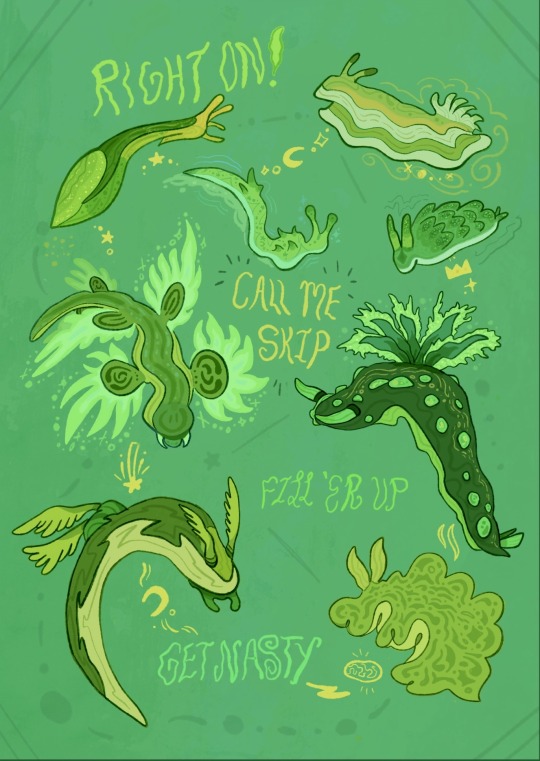
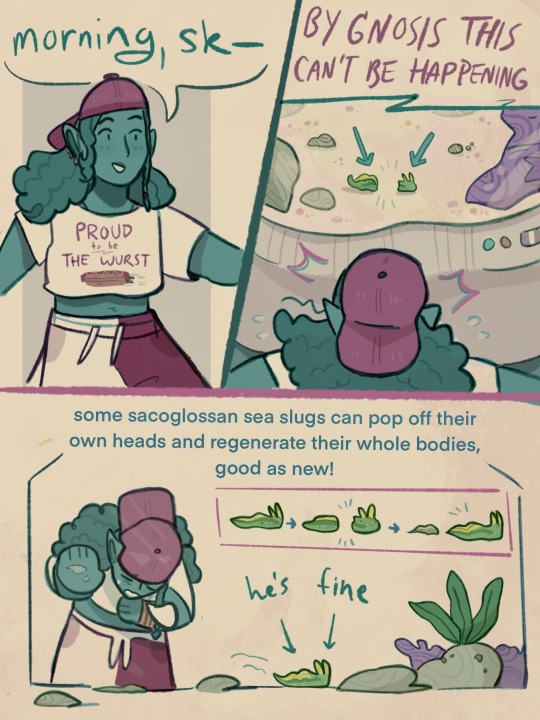
going back through old stuff, found my “what if skip looked like a sea slug” drawings
more info about sacoglossans in this vid
#my art#absolutely riveting stuff from me lately lmfao#sorry everybody#idk when I’ll be able to finish stuff next since im working a lot more rn#so many projects not enough time#dimension 20#a starstruck odyssey#d20 starstruck#im a baby biology nerd so if i got any of this wrong please gently put me in a cup and take me outside#my body can’t withstand being hit with a flyswatter
413 notes
·
View notes
Note
These are sea sheep! They're a lovely type of sacoglossan sea slug. They eat algae, and then keep the algae within themselves. The algae gets a safe home, and in return, the sea sheep gets energy. I love these creatures so much and wanted to share. Hope Pixie enjoys and also has a great day.

those be absolutely most adorable creatures Pixie ever see thank you so much for share
185 notes
·
View notes
Text

Costasiella kuroshimae-also known as a "leaf slug", "leaf sheep", or "salty ocean caterpillar"-is a species of sacoglossan sea slug. Costasiella kuroshimae are shell- less marine opisthobranch gastropod mollusks in the family Costasiellidae. They range in size from 5 millimetres to 1 centimetre in length
📷:alexmustard1
Lembeh Strait
600 notes
·
View notes
Text
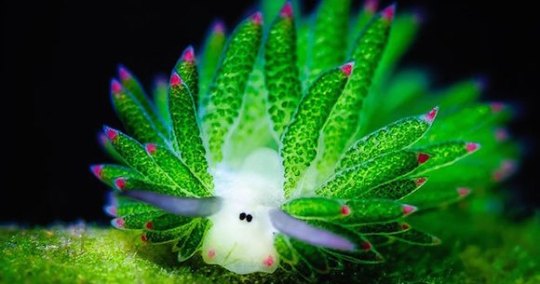
Meet the Sea Sheep. Costasiella kuroshimae—also known as a "leaf slug", "leaf sheep", or "salty ocean caterpillar"—is a species of sacoglossan sea slug. They range in size from 5 mm to 1 cm. "Shaun the Sheep" is what many divers in the Philippines affectionately call them.


I didn't even know they were a thing.
136 notes
·
View notes
Text


Sacoglossan sea slugs in Elysiidae, Elysia ornata (1) and Elysia rufescens (2). Rubble Pile, 2/11/2024.
30 notes
·
View notes
Note
what is your favourite small animal and why is it bnuuys?
okay so you're very close but it's these fuckers
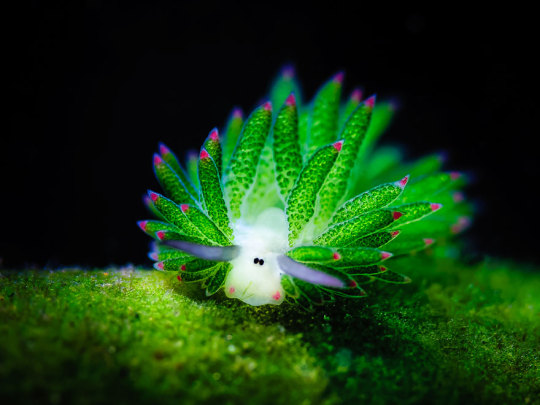
this is the leaf sheep and he's a type of sacoglossan sea slug. he is bioluminescent and capable of photosynthesis because he retains the chloroplasts from the algae he eats!! he's extremely tiny, about .5-1cm in length, and he looks like a little sheep made of leaves. hence the name. he also, in my opinion, looks like a pokemon.
he is closely related to the nudibranch, an order of sea slugs that lack an internal shell and have external gills.
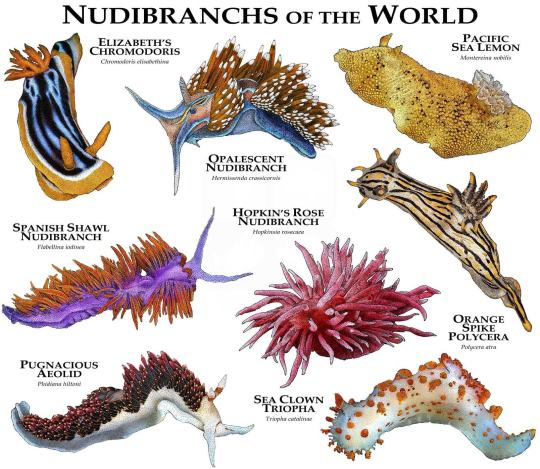
(quick infographic so you can see how cool these fuckers are)
the reason I say you were close is because there is a species of nudibranch called a sea bunny!!!! and they're so cute!!!!!!

look at these fuckers!!!!!! definitely one of my favourites.
anyways. neurodivergent people when they are asked about something that has zero to do with their special interest finding a way to relate it back to their special interest. sorry. but also not at all please give me more excuses to talk about sea slugs.
#nudibranchs#leaf sheep#leaf slug#sea bunny#animals#fun facts#asks#alys-is-dumb-sometimes#caseyrambles#caseys fun factos#sorry alys you can't ask a simple question like that and not expect a six paragraph answer I'm just sexy like that
31 notes
·
View notes
Note
Nice work on the mollusc starters, I absolutely love the sarcolamb line!
I just wanted to ask, what specific molluscs are they based on?
My guess is a type of sea bunny, the scaly foot gastropod and...
I know its an octopi, but what specifically?
Sorry if I'm reading into it too much, I love researching wildlife!
Hey! Thanks so much!
-Sacolamb is kind of a combination between a leaf sheep slug and dorid nudibranchs! Leaf sheep were the main inspiration, but I decided to add elements of nudibranchs into sacolamb (and the whole line) because 1. I personally find dorids to be very adorable, and 2. Leaf sheep are sacoglossan sea slugs, which (as far as I know) aren’t toxic like nudibranchs, so the added nudibranch inspiration is kind-of there to (hopefully) make incoglossa’s type make a little more sense.
-You’re correct with scalit! Its only inspiration species-wise is the scaly foot gastropod.
-With collectopus, its main inspiration is more funneled into its behavior than its appearance: the coconut octopus- because they’re known to carry around shells and such as shelter! It’s also very based off of that one video of an octopus with a plastic cup (and the phenomenon of octopuses utilizing human trash in general). Visually, it’s just supposed to be a “generic octopus” with some dumbo octopus features (it’s cute little fins!).
Thank you for the ask!!! ^_^)/
18 notes
·
View notes
Text
Meet the…

SEA SHEEP!
Costasiella kuroshimae, aka the leaf slug, sea sheep, and loads of other names, is a type of sacoglossan sea slug!
Scientific Classifications:
Kingdom: Animalia
Phylum: Mollusca
Class: Gastropoda
Clade: Heterobranchia
Informal Group: Opisthobranchia
Clade: Sacoglossa
Clade: Plakobranchacea
Superfamily: Limapontioidea
Family: Costasiellidae
Genus: Costasiella
These little cuties are around Japan, the Philippines, and Indonesia! They are capable of photosynthesis via a process called kleptoplasty, where they retain the chloroplasts from the algae they eat.
Their lifespan is between 6 months to a year. They are 5 millimeters to 1 centimeter
68 notes
·
View notes
Note
I enjoy seeing you get excited about sea slugs
What's your favorite?
I'm glad!!
My favourite is cyerce nigricans! It reminds me of if a biblically accurate angel was a butterfly. I'm sure there are prettier sea slugs, but I'm fond of this one


They're also of the sacoglossan type which I find cool. Sacoglossans are also referred to as "solar-powered sea slugs" :D
92 notes
·
View notes
Text
This is Gargoyle, the newest major addition to my tank:

She is a member of the species Elysia diomedea, the Pacific lettuce sea slug. My other sea slug Arugula

that I've shown here before is an Elysia clarki (or crispata - sea slug taxonomy kinda sucks), the Atlantic lettuce sea slug. Some people call them lettuce nudibranchs because they look similar to nudibranchs, but they aren't nudibranchs at all, all nudibranchs are specialist carnivores - despite what disreputable aquarium stores will tell people, but that's another rant. These guys are herbivores, feeding only on specific types of live, complex algae*, and they digest it in the strangest way possible. They save the photosynthetic organelles from the algae cells and keep them alive for a while so they can photosynthesize. All other photosynthetic animals, like corals/some types of clams, have symbiotic relationships with microorganisms that do the photosynthesis for them. Sacoglossans are the only animals that anyone is aware of which can photosynthesize directly, albeit with stolen hardware.
It's fun to watch them after a big meal, they will go to the brightest safe spot to sun themselves.
*almost every plant you see in the ocean - kelp, etc. isn't actually a proper plant but a type of algae.
18 notes
·
View notes
Text


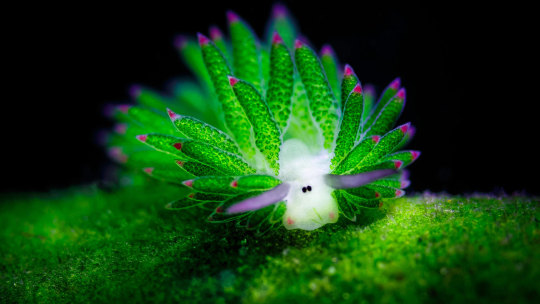
Leaf sheep!!!! Also known as Costasiella kuroshimae also known as a "leaf slug", "leaf sheep", or "salty ocean caterpillar"—is a species of sacoglossan sea slug.
Costasiella kuroshimae are shell-less marine opisthobranch gastropod mollusks in the family Costasiellidae. They range in size from 5 millimetres to 1 centimetre in length.
These sheep's diet is algae; the algae contains chlorophyll which is photosynthetic. This chemical from the algae they consume and the bodies of these nudibranchs has given them the name 'solar-powered sea slug' through photosynthesis.
──────────────────────
⇾ Follow my page for more epic, silly and boomblu content; share so I can grow if you wish, and come visit my other socials at my Linktree [Just click the word Linktree, it's hyperlinked :)]. ⇽
Check out the rest of my posts too!!! A lot of them are underrated. ;o Like everything you find interesting if you want. :3
Remember, you can find all of my socials here (click the word [here], it's hyperlinked (。◕‿‿◕。)
#nudibranch#nudibranchs#sea slugs#sea bunny#sea animals#sea life#sea creatures#sea#ocean#ocean life#oceancore#ocean view#underwater#water#cute animals#cute animal#animalia#animal#animals#cute lil guy#cute little guy#little guy#lil guy#just a little guy#just a lil guy#friend shaped#little man#smol#aesthetic#green aesthetic
18 notes
·
View notes
Text
so i went to read about nudibranchs on wikipedia and immediately got distracted going down the link rabbit hole of "Sacoglossan" sea slugs (often confused with nudibranchs) and im just gonna c/p some of the wikipedia about them -
Sacoglossa, commonly known as the sacoglossans or the "solar-powered sea slugs", are a superorder of small sea slugs and sea snails, marine gastropod mollusks that belong to the clade Heterobranchia. Sacoglossans live by ingesting the cellular contents of algae, hence they are sometimes called "sap-sucking sea slugs".
...
Some sacoglossans simply digest the fluid which they suck from the algae, but in some other species, the slugs sequester and use within their own tissues living chloroplasts from the algae they eat, a very unusual phenomenon known as kleptoplasty, for the "stolen" plastids. This earns them the title of the "solar-powered sea slugs", and makes them unique among metazoan organisms, for otherwise kleptoplasty is known only among single-celled protists.
...
Also known as chloroplast symbiosis, kleptoplasty is the energy-providing mechanism that gives the Sacoglossan’s the nickname, “solar-powered sea slugs”, and E. crispata the name, “lettuce sea slug.” As algal food is being digested, the chloroplasts are absorbed into the cells lining the digestive tract and up into their parapodia. How many chloroplasts the slug sequesters and the length of retention depends on the individual species of slug. Chloroplast retention in E. crispata tends to last around 40 days. Given the variation in their diet, chloroplasts from different algal species have been found to be taken up into the same cells, functioning normally alongside the other.
tl;dr these sea slugs eat algae and store their chloroplasts for months to photosynthesize for them when food is scarce; sacoglossan sea slugs are the only multicellular organisms known to do this (if I understand correctly 😅)
..
ik everyone probably knows about them but im in love rn so anyways here's some pics!
(forgive that I didnt pay attention to the specific species when grabbing pics)
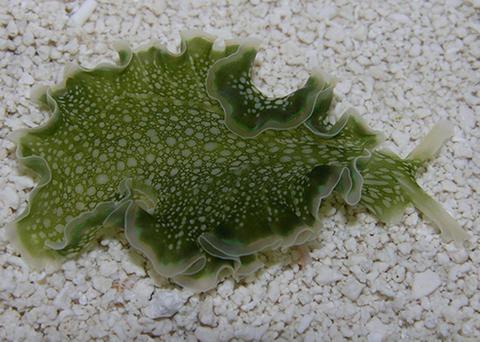






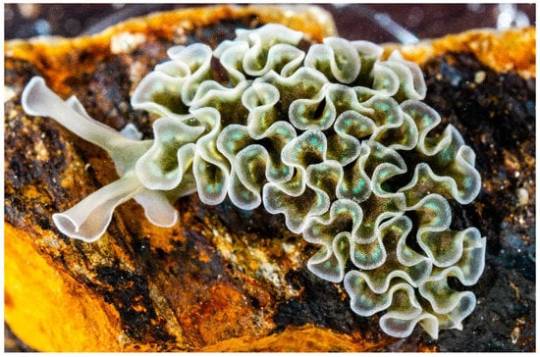
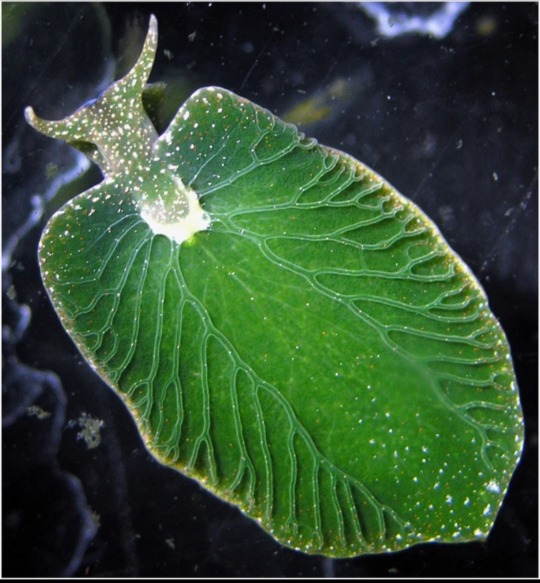
oh to be a sea slug eating sunlight in the ocean 🩵💚💙
#idk they just made me really happy#ik ive seen pics of lots of them but never rlly knew about the photosynthesis thing#which is AWESOME there's smth slightly above my head here about lateral gene transfer which is fascinating#there was smth special abt i think the lettuce sea slug in particular#bc multiple species of algae chloroplasts were working TOGETHER in them#idk im not smart or sober enuff to get into it#i just love these slugs#FINALLY LET ME POST IT GOD
13 notes
·
View notes
Text
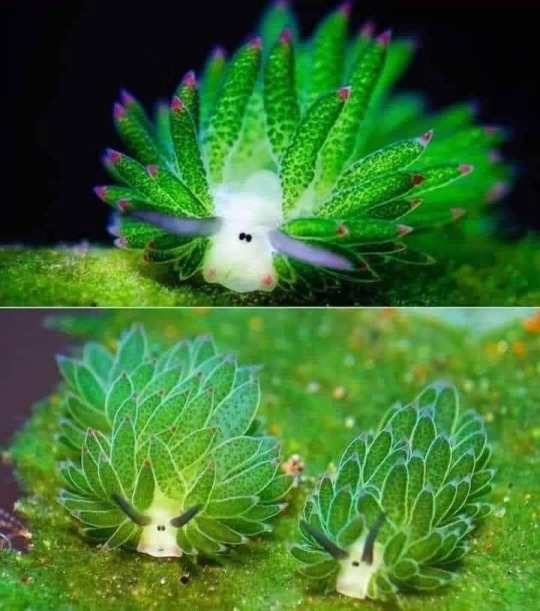
Costasiella kuroshimae—also known as a "leaf slug", "leaf sheep", or "salty ocean caterpillar"—is a species of sacoglossan sea slug. Costasiella kuroshimae are shell-less marine opisthobranch gastropod mollusks in the family Costasiellidae. They range in size from 5 millimetres to 1 centimetre in length.
The funny little creatures have the face of a cow or sheep, but a back that looks like a house plant.
They’re an animal that can Photosynthesize, and can be found in shallow marine waters in Japan, Indonesia and the Philippines.
They look like a farm animal, act like a plant, and live in the sea! 💚 how cool is that!? ✨🐮🐑🪴
7 notes
·
View notes